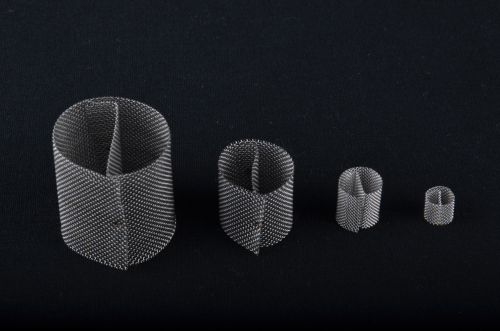
Historically, the sheer cost of manufacturing Dixon Rings in any great quantity was a major obstacle, leading to limited uptake for several years following their initial creation.
.jpg) Croft's extensive research has uncovered further uses for Dixon Rings, such as removing tritium from water.
Croft's extensive research has uncovered further uses for Dixon Rings, such as removing tritium from water.
However, thanks to advances in technology and automation of many manufacturing processes, this is no longer the case. Dixon Rings are now regarded as being superior to other packing options as they offer an extremely low pressure drop, low height equivalent to a theoretical plate (HETP) and a large surface area, making them ideal for use in a wide range of applications.
Global application
Croft has developed a process that automates the manufacture of the rings, meaning they can be produced quickly and cost effectively.
Dixon Rings have traditionally been used in difficult applications, such as removing tritium from water, but Croft’s extensive research has uncovered further uses for them, such as counter-current absorption (known as scrubbing columns), which scrubs CO2 from the air or flue gases.
Performance benefits
Due to its small size, the Dixon Ring can offer a large surface area and superior performance in a range of applications, such as extracting Galantamine from daffodils, which is used to treat Alzheimer’s disease.
The Dixon Ring can also improve the behaviour of a liquid or gas as it flows over the individual meshes. Under the right conditions, the liquid will wet the mesh material, giving it an extremely high surface area for mass transfer. The packing pressure drop is related to gas velocity, liquid spray volume, material weight and surface tension.
Environmental benefits
With the environmental spotlight firmly on carbon conscious solutions and increasing regulations on which emissions can be released into the atmosphere, there is a growing opportunity for Dixon Rings to be utilised more widely.
The rings provide very low HETP (Height Equivalent to a Theoretical Plate), meaning that a much shorter column is required to achieve the same separation as conventional packing materials such as Raschig rings. This is also means that substituting less efficient packing for Dixons rings can significantly improve separation efficiency and save on the large capital cost of having to replace the entire column.
Dixon Rings in practice
Croft’s research into application for Dixon Rings focused on these benefits, and highlighted a number of specific markets where they would be put to best use, such as operations that require high efficiency, mass transfer and exceptionally low pressure drops.
These include:
Air pollution control scrubbers - this is a diverse group of air pollution control devices used to remove certain particles or gases from exhaust systems, renewable energy production, industrial processes and chemical, medical and hazardous waste processing.Using Dixon Rings, which are smaller than the more traditional filters, means these scrubbers can work more efficiently, making them more useful in space challenged areas and ultimately, reducing cost.
Stripping, a physical separation process where one or more components are removed from liquid by a vapour stream commonly used in industrial applications. The process removes harmful contaminants from waste, and is usually carried out in a packed column. By using Dixon Rings, the column has an increased surface area, speeding up the process.
Liquid – liquid extraction (LLE), or liquid to liquid chromography, is the method of transferring one or more solutions to another immiscible liquid. Also known as solvent extraction, this process was initially utilised in the petroleum industry and has since been used in numerous applications, including hydrometallurgical, pharmaceutical and nuclear industries. The use of Dixon Rings in the LLE process, introduces several operational benefits due to the robust scale of rings, something which cannot be achieved using alternative techniques.






